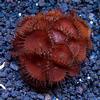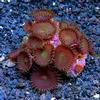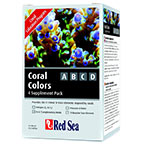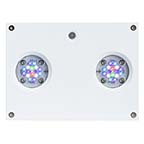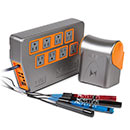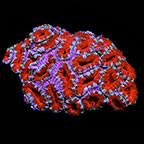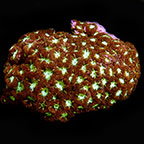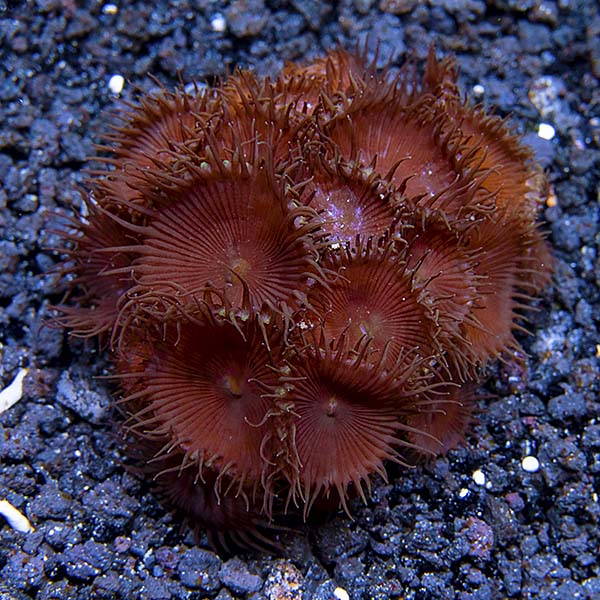
Additional locales and sizes may be available!
Additional locales and sizes may be available! Email me when availableQuick Stats
What do these Quick Stats mean? Click here for more information
What do these Quick Stats mean? Click here for more information
Overview
The Indonesian Nuclear Green Colony Polyp is a bold color variety of Protopalythoa polyp coral also known as Sea Mats, Button Polyps, Moon Polyps, or Encrusting Anemones. While most species of Protopalythoa corals are typically brown or tan in color, the Indonesian Nuclear Green Colony Polyp sports a rich, oxblood red coloration with accents of mossy olive-green coloration that adorns its tentacles and the margins of its oral discs. As colonial animals, the Nuclear Green Colony Polyp is made up of multiple individual polyps attached to a piece of live rock.
Protopalythoa polyp corals are relatively easy to distinguish from their Zoanthid cousins, boasting the largest polyps among all the Zoanthids. Protopalythoa polyp corals are found in a wide range of areas, commonly occurring on sandy reef flats and rocky, hard bottom habitats in shallow or deep water. Protopalythoa polyp corals are often described as having a similar appearance to the carnivorous Venus Fly Trap Plant featuring long, tapered tentacles used to ensnare any potential food items.
Similar to other Colony Polyp Corals, the Nuclear Green Colony Polyp is relatively easy to maintain, making it a good choice for beginner reef aquarists. The Nuclear Green Colony Polyp requires moderate to high light levels combined with medium water movement within the aquarium. The Nuclear Green Colony Polyp grows rapidly and can potentially crowd out neighbors including any sessile life. In addition, the Nuclear Green Colony Polyp has the ability to sting other animals and are semi-aggressive so be sure to provide ample space between the Nuclear Green Colony Polyp and any neighboring coral.
Under ideal conditions, the Nuclear Green Colony Polyp will multiple without difficulty in home reef aquariums by budding (splitting off a portion of their base or mouth) to increase the size of the colony. The Nuclear Green Colony Polyp contains symbiotic photosynthetic zooxanthellae algae that satisfy almost all the nutritional requirements of the Nuclear Green Colony Polyp. However, if lighting conditions are not optimal, the Nuclear Green Colony Polyp will benefit from weekly feedings of micro-plankton or brine shrimp fed to each individual of the colony. For continued good health, the Nuclear Green Colony Polyp will require the addition of iodine and other trace elements to the water.
Please note that is not uncommon to receive a rock that is not completely covered in polyps. But under the right conditions, the Nuclear Green Colony Polyp will quickly spread and encrust the surrounding rocks in the aquarium.
Approximate Purchase Size: Medium 2" to 3", Large 3" to 4"


